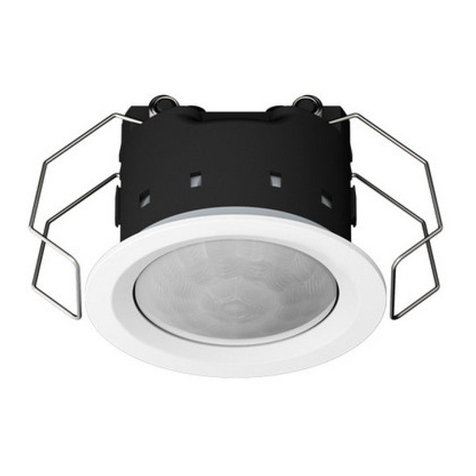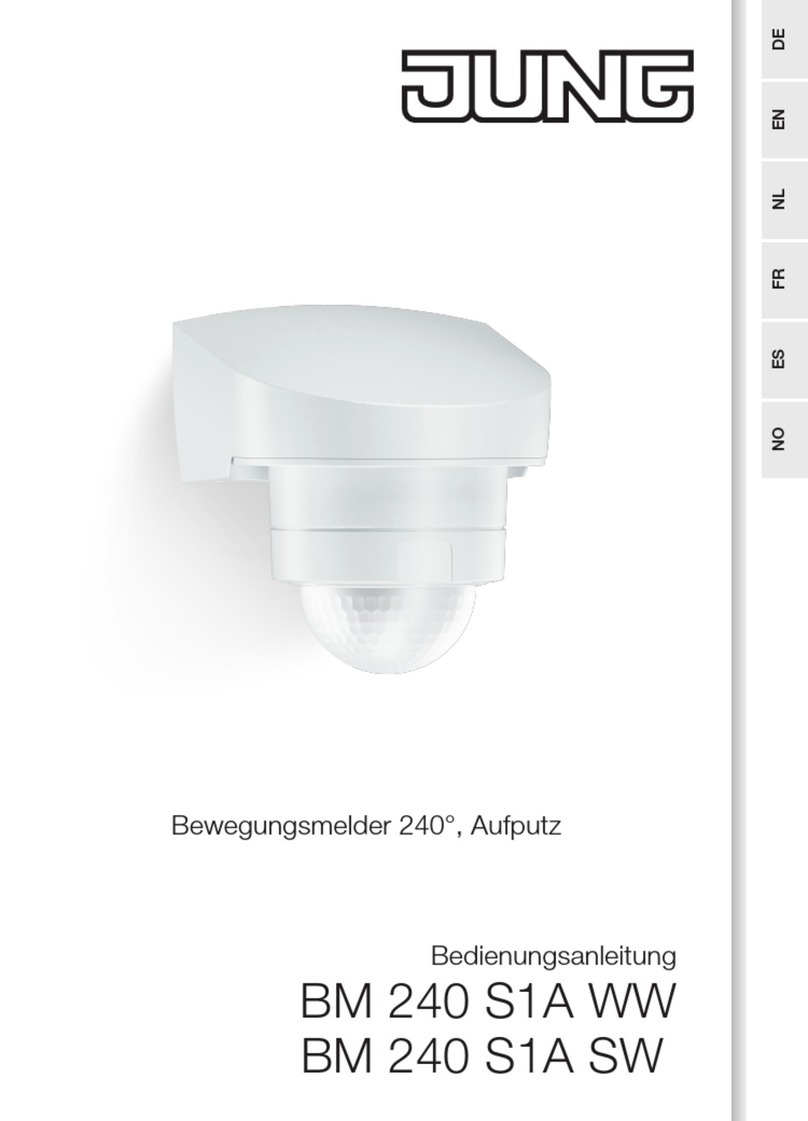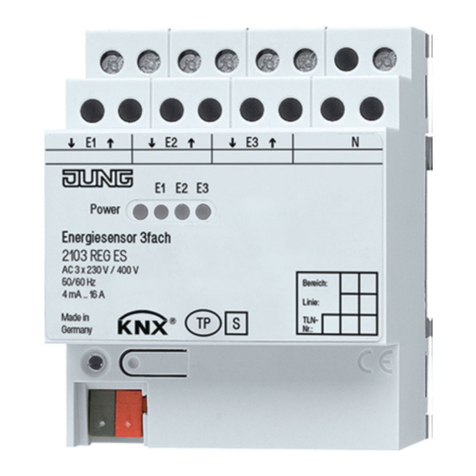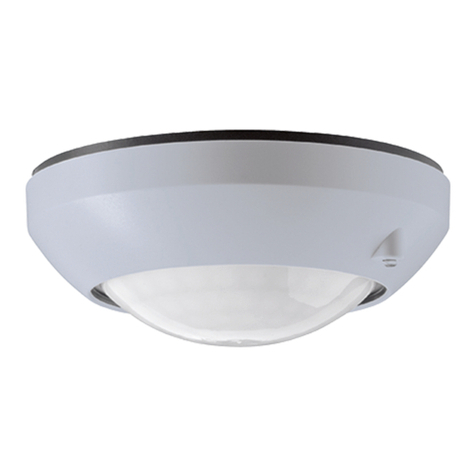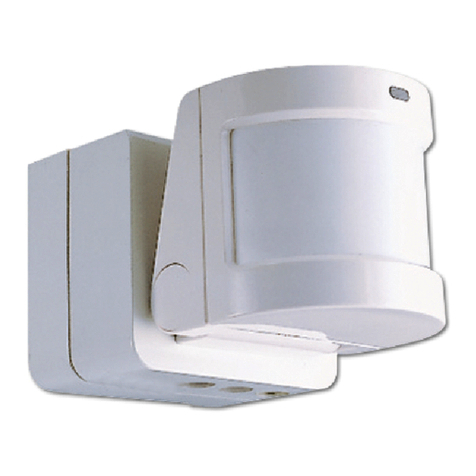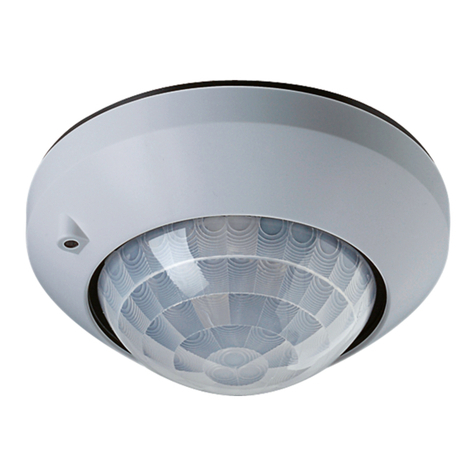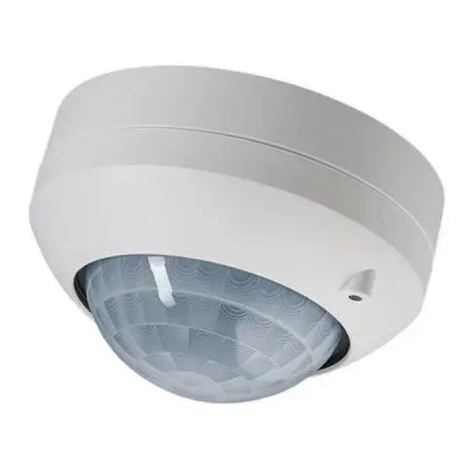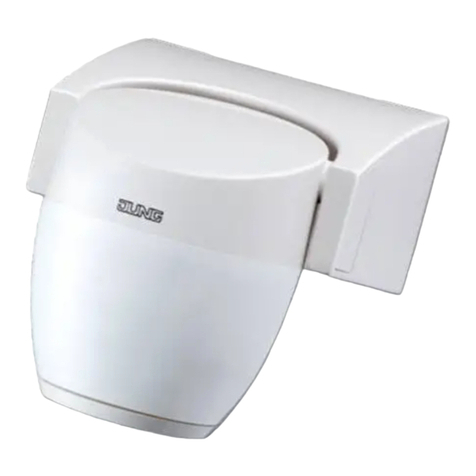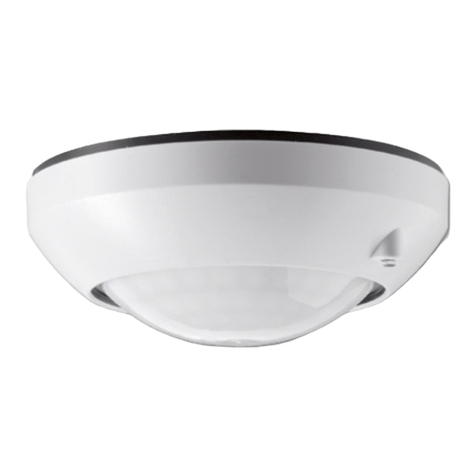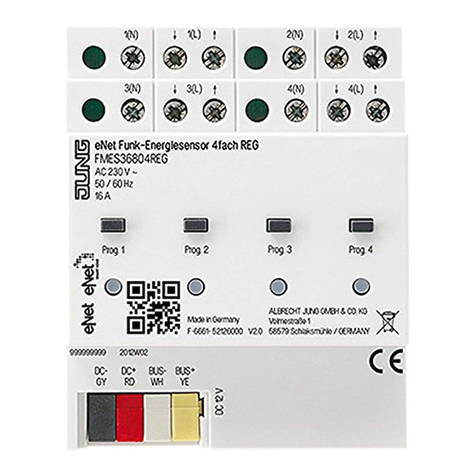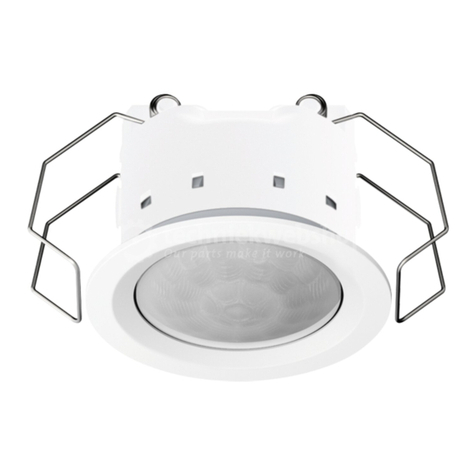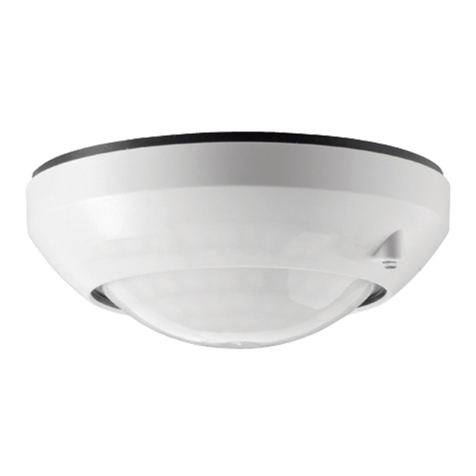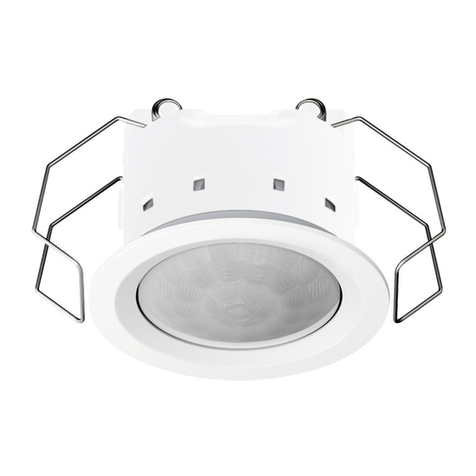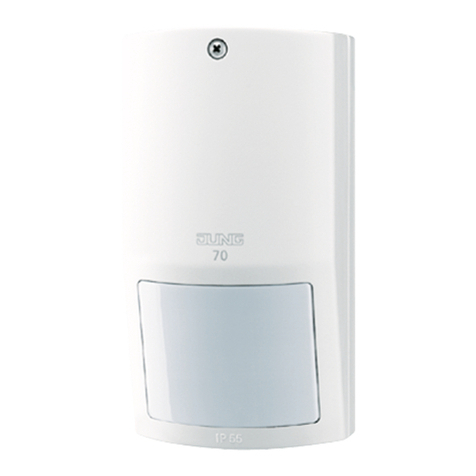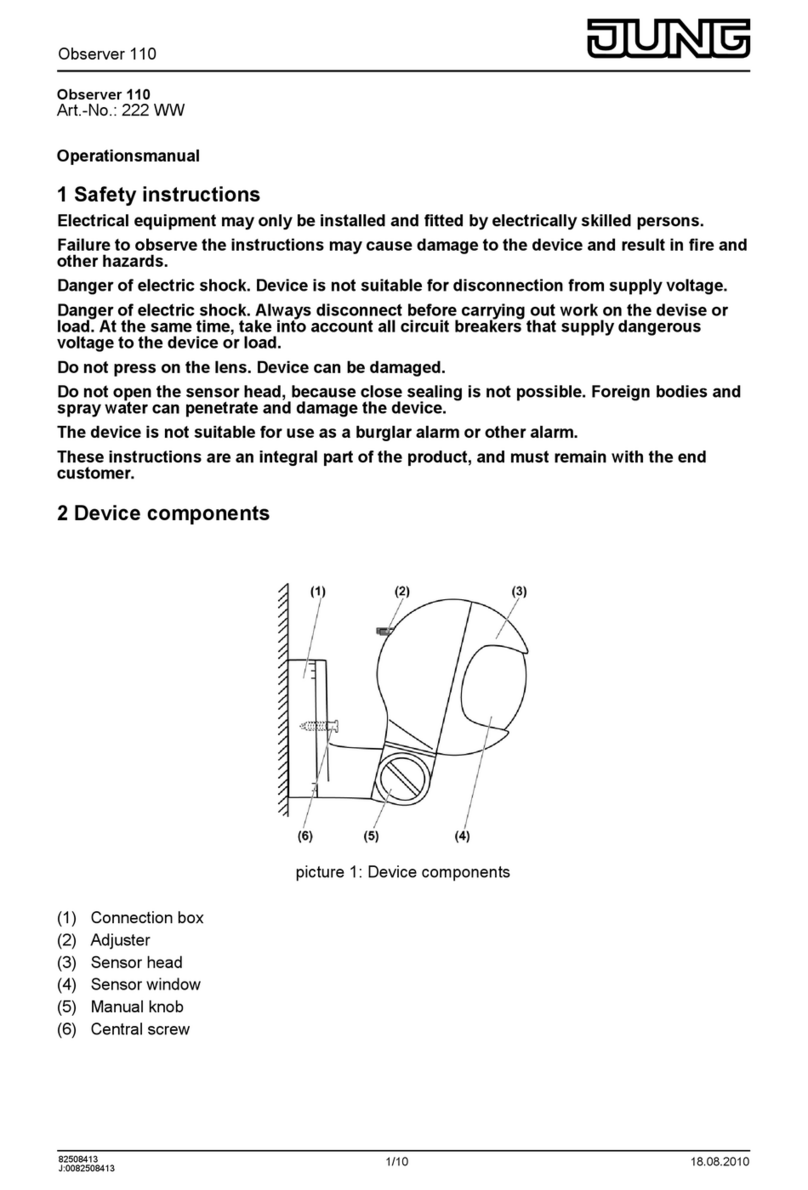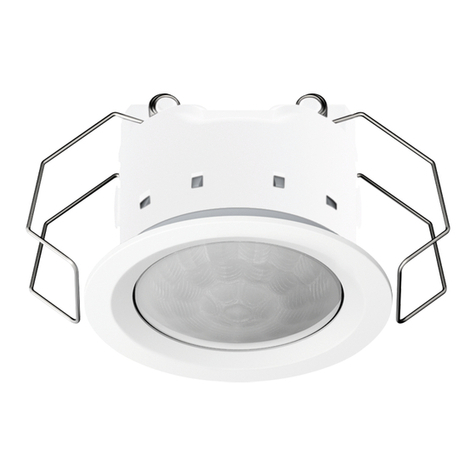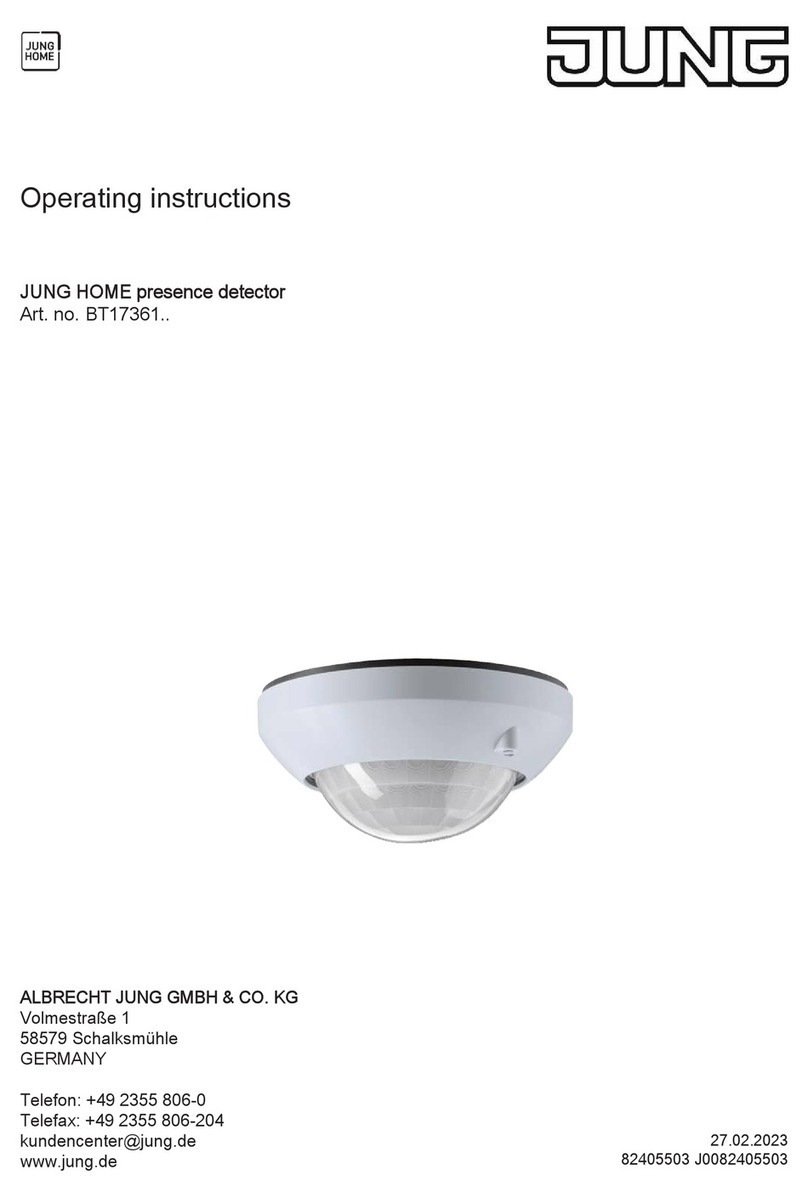
Without cover Ø approx. 8 m
All data are applicable for an installation height of 2.5 m
oPull off push-on cover.
oUsing scissors, cut out push-on cover along the marked lines as required.
oPush on push-on cover.
Calibrating the brightness value
Brightness calibration is necessary to prevent light oscillations from occurring. A light oscillation
occurs when the presence detector switches off again due to the lighting that has been
switched on (brightness value exceeded). The brightness calibration is performed in the lighting
situation that is required as workplace brightness. The lighting controlled by the presence
detector is switched on. Avoid extraneous light, e.g. from daylight and other lighting. Various
lamps, e.g. fluorescent lamps, require some time to reach full brightness. Therefore note the
run-in phase of the lamp. The LED (5) can be used as an adjustment aid.
Meaning of the LED with the load switched off
LED off Monitored surface is too dark, load switches
on when motion detected.
LED on or LED flashes Monitored surface is bright enough, load
remains off when motion detected.
Meaning of the LED with the load switched on
LED off Monitored surface is too dark, load remains
switched on when motion detected. When no
motion is detected, it is switched off after the
run-on time elapses.
LED on Monitored surface is bright enough due to
lighting that is switched on, load remains
switched on when motion detected. When no
motion is detected, it is switched off after the
run-on time elapses.
LED flashes Monitored surface is very bright due to lighting
that is switched on or extraneous light, load
switches off after approx. 10 minutes, even if
the run-on time is set longer or if motion is
detected.
oPull off decor ring (3).
oTurn adjuster (7) time to 30 min.
oTurn lux adjuster to 3.
LED (5) is off.
iDo not place brightness sensor (1) in shadow, because otherwise correct brightness
measurement will not be possible. The measured brightness value consists of the reflected
artificial light and daylight, and depends on the reflective characteristics of the surface
under the presence detector.
oSwitch on presence detector via motion in the detection area.
oTurn lux adjuster (7) in 2 direction until LED (5) lights up.
Presence detector is set to the current brightness.
iIf lux adjuster is on 0, the presence detector only switches on through operation of an
extension. In this case the switch-off brightness is 400 lux.
oAttach decor ring (3).
8/11
82552623
J0082552623 04.09.2015
Light Management
Presence detector compact

